Two years ago, AirKayaks introduced the specially-packaged, high-pressure AdvancedFrame DS series of kayaks from Advanced Elements. Featuring the same high quality construction and materials as the standard AE1012 AdvancedFrame and AE1007 Convertible, the DS Series™ was bundled with upgraded accessories to enhance performance and comfort.
The upgrades included:
AEDS High-pressure inflatable 4-6 PSI dropstitch floor for extreme rigidity
AE2011 Double action high-pressure 14 PSI handpump with pressure-gauge
AE2013HB High-back lumbar seat(s) for the ultimate in a comfortable, adjustable back rest.
The kayaks were wildly popular, and this past week, AirKayaks introduced the next generation in the DS Series – the AdvancedFrame AE1044 DS-XL™* and DS-XLC™*.
The new DS-XL series is an elongated version of the classic AE1012 AdvancedFrame. With an additional 5 inches in length and an adjustable foot peg, the kayaks are comfortable enough for both taller and smaller paddlers. The longer, streamlined body – in conjunction with the high pressure floor – provides better tracking and increased glide with minimal increase in weight.
We grabbed two from the limited supply that recently arrived – more are available in mid-September. Our first review focuses on the AE1044 AdvancedFrame DS-XLC (Cover). This kayak features a zip-on deck with storage options, allowing paddlers the flexibility of paddling an open style design for easy entry, or a closed deck design which can take an optional spray skirt.
So here are details on the AdvancedFrame AE1044 DS-XLC, a 10′ 10″ inflatable with zip-in cover, weighing in at 35 lbs. in the carrying case.
Setup/Inflatation
We unpacked the box and laid out the pieces – inflatable kayak, carrying case, instructions, repair kit, foot brace, double action pump with gauge, zip-on deck (installed on the kayak) and high-back lumbar seat. The kayak with seat, floor and brace weighs 35 lbs, or 39 lbs in the bag with the pump. Bag measurements are approximately 32 x 19 x 10 inches. The kayak box as arrived weighs 40 lbs, measuring 33 x 21 x 10 inches. The dropstitch (DS) floor weighs 5 lbs and comes in a second box with adaptor and repair kit.
(AirKayaks Side note #1: When initially removing the kayak from the carrying case, take a good look at how the kayak is folded. This is probably the most overlooked step and it is VERY helpful when trying to get the kayak back into the bag.)
Set up is straight-forward and simple – unpack, unfold, inflate. As this is similar to the standard AdvancedFrame in many respects, we will re-copy much of the instructions found in the writeup on the standard AE1012. The DS XL Series will have two sets of instructions – one can be found in the inner side pocket of the carrying case. This details the basic kayak instructions for inflation, deflation and
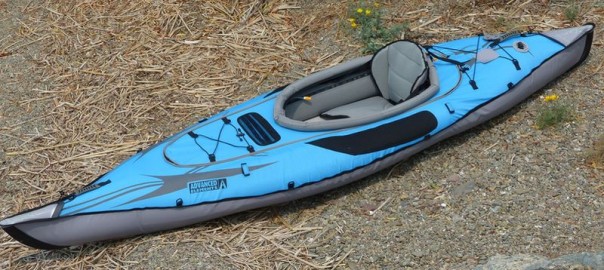
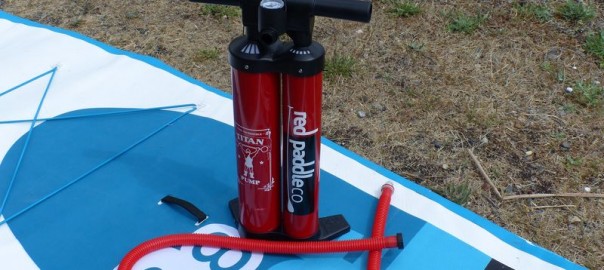
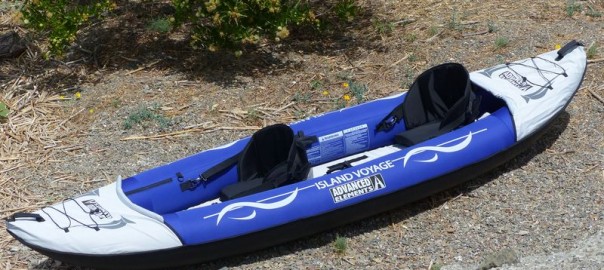

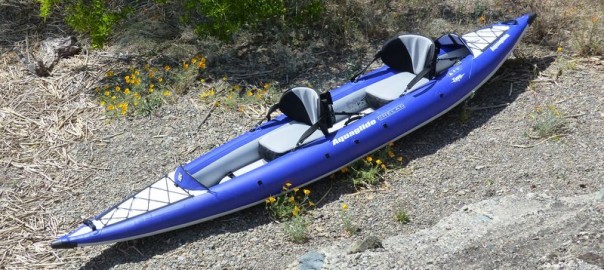
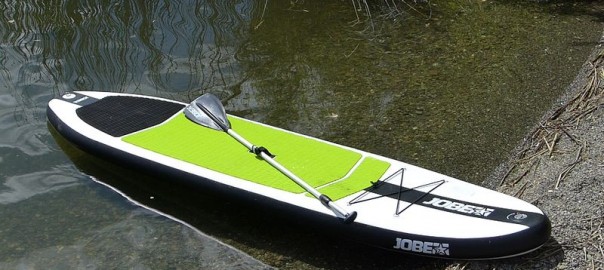
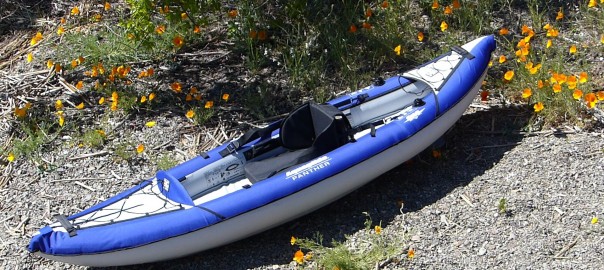
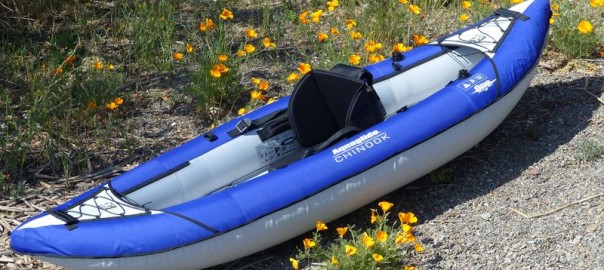
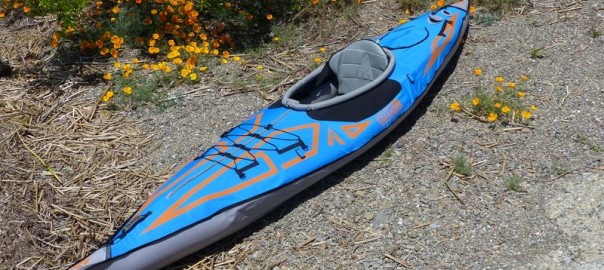
You must be logged in to post a comment.